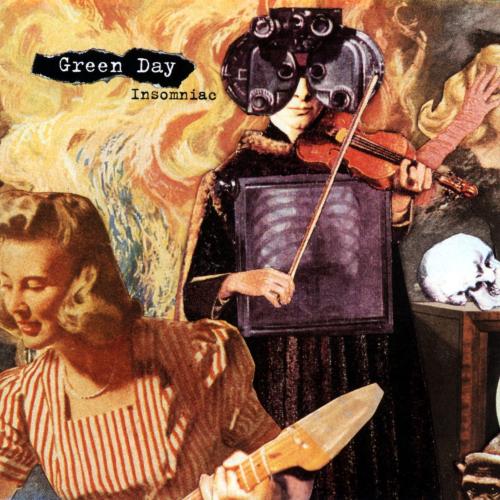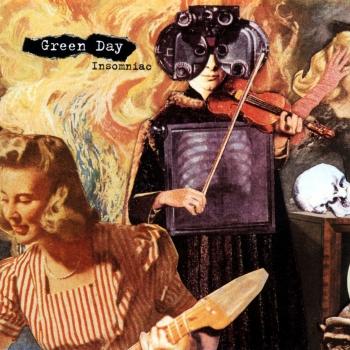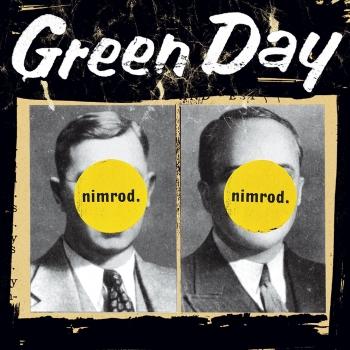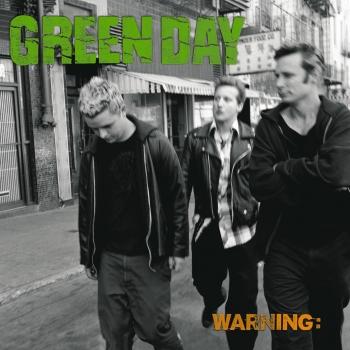
Insomniac (Remastered) Green Day
Album info
Album-Release:
1995
HRA-Release:
11.11.2016
Album including Album cover
I`m sorry!
Dear HIGHRESAUDIO Visitor,
due to territorial constraints and also different releases dates in each country you currently can`t purchase this album. We are updating our release dates twice a week. So, please feel free to check from time-to-time, if the album is available for your country.
We suggest, that you bookmark the album and use our Short List function.
Thank you for your understanding and patience.
Yours sincerely, HIGHRESAUDIO
- 1 Armatage Shanks 02:16
- 2 Brat 01:43
- 3 Stuck With Me 02:15
- 4 Geek Stink Breath 02:15
- 5 No Pride 02:19
- 6 Bab's Uvula Who? 02:08
- 7 86 02:47
- 8 Panic Song 03:35
- 9 Stuart and the Ave. 02:03
- 10 Brain Stew 03:12
- 11 Jaded 01:30
- 12 Westbound Sign 02:13
- 13 Tight Wad Hill 02:01
- 14 Walking Contradiction 02:30
Info for Insomniac (Remastered)
If Nirvana burst the dam that kept punk rock at bay in the '80s, Green Day--with their third album, „Dookie“ —were the first all-consuming flood to hit the charts. Brandishing old school Ramones and Clash riffs, the Berkeley, CA trio made out like bandits, selling nearly ten million albums, scaling mainstream magazine covers and hijacking rock-festival spotlights from established acts. But judging from the lyrical contents of „Insomniac“, bringing punk to the malls hasn't been a very satisfying experience for singer/guitarist Billie Joe Armstrong.
Throughout, he rails at the moribund state of youth culture and his place in it, as bassist Mike Dirnt and drummer Tre Cool speed up this anger to a frenetic pace. The disses fly every which way--at well-to-doers copping poses ("Brat"), at girlfriends who just don't understand ("Stuart And The Ave."), towards the world at-large ("Panic Song"), and, most of all, at himself. As though aware that his band helped make a sacred lifestyle fashionable, Billie Joe demeans his existence in song after song--unable to even sleep in peace with himself. For the disenfranchised listener, these are the ABCs of self-hate rebellion.
Judging from the catchiness of his songs, this predicament isn't likely to end soon. "Geek Stink Breath," a heavy, mid-tempo rumble in the manner of the Sex Pistols' "Sub-Mission"; "Panic Song," with its frenzied "Pinball Wizard"-like build-up, and the fired-up, pop fury of "All Wound Up," all embody the very principals that make the punk lessons of 1977 so attractive today: simplicity, hooks, a lack of pretension, and a disdain for authority. On „Insomniac“, Green Day puts those lessons to use yet again--their platinum nightmares are sure to follow.
„Dookie gave Green Day success, but it was never really clear whether they wanted it in the first place. However, given the incessantly catchy songwriting of Billie Joe, the success made sense. Green Day were traditionalists without realizing it, learning all of their tricks through secondhand records and second-generation California punk bands. They didn't change their sound in the slightest after signing to a major label, which meant that they couldn't revert back to a harsher, earlier sound as a way to shed their audience for Dookie's follow-up, Insomniac. Instead, they kept their blueprint and made it a shade darker. Throughout Insomniac, there are vague references to the band's startling multi-platinum breakthrough, but the album is hardly a stark confessional on the level of Nirvana's In Utero. It's a collection of speedy, catchy songs in the spirit of the Buzzcocks, the Jam, the Clash, and the Undertones, but played with more minor chords and less melody and recorded with a bigger, hard rock-oriented production. While nothing on the album is as immediate as "Basket Case" or "Longview," the band has gained a powerful sonic punch, which goes straight for the gut but sacrifices the raw edge they so desperately want to keep and makes the record slightly tame. Billie Joe hasn't lost much of his talent for simple, tuneful hooks, but after a series of songs that all sound pretty much the same, it becomes clear that he needs to push himself a little bit more if Green Day ever want to be something more than a good punk-pop band. As it is, they remain a good punk-pop band, and Insomniac is a good punk-pop record, but nothing more.“ (Stephen Thomas Erlewine, AMG)
Billie Joe Armstrong, vocals, guitar
Mike Dirnt, bass, backing vocals
Tré Cool, drums
Recorded September 1994 - May 1995 at Hyde Street Studios, San Francisco, California
Engineered by Kevin Army, Bernd Burgdorf
Produced by Rob Cavallo, Green Day
In 1987 friends Billie Joe Armstrong and Mike Dirnt created a band named Sweet Children. Their first show of note took place in October of that year at Rod’s Hockey Pit in California. A year later John Kiffmeyer joined their band as a drummer and business manager, helping them create a local fan base. They were signed to Lookout! Records after the owner, Larry Livermore saw them play in one of their earlier shows. In order to avoid confusion with the band Sweet Baby, they changed their name. The band now known as Green Day was born. The name is supposedly related to their liking of marijuana.
Lookout! released their first album in 1990 named 39/Smooth. Included with the album was a letter supposedly from I.R.S. Records saying they had tried to sign Green Day. The band included a response saying they were loyal to Lookout!. Their response called I.R.S. “cheesy and washed up.” Later in 1990 Green Day released Slappy and Sweet Children. Also in 1990 John Kiffmeyer left the band to attend college. Tré Cool, the drummer from The Lookouts became Green Day’s temporary replacement. Once it was apparent that Kiffmeyer did not plan to return, Tré Cool took up the role as permanent drummer. In 1991, 1,039/Smoothed Out Slappy Hours, a compilation of 39/Smooth, Slappy and 1,000 Hours albums. For most of 1992 and 1993, the band was on tour which included shows in Europe. In 1992, their album Kerplunk sold fifty thousand copies in the United States. This was impressive for the independent punk band.
The success of Kerplunk drew interest from major record companies to Green Day. They decided to leave Lookout! records and sign with Reprise Records under the producer Rob Cavello. This move gave them the name sellouts in the eyes of many punk fans. This did not stop them as they went on to release Dookie. The album was recorded in three weeks and was an immediate success. The airtime given to “Longview,” “Basket Case,” and “When I Come Around” by MTV aided this success greatly. Every one of those songs hit number one on Modern Rock Tracks charts. That same year marked their nationwide tour accompanied by the bands Queercore and Pansy Division. Green Day played at both Lollapalooza and Woodstock 1994. The later performance jump started their publicity and recognition nationwide. In 1995, Dookie won the Grammy for Best Alternative Album.
In 1995, the single “J.A.R.” went right to the number one spot on the Modern Rock Track chart. The album Insomniac quickly followed in the fall of 1995. Insomniac was much darker than the band’s previous work. It did well, getting four of five stars from Rolling Stone Magazine. One of the songs on this album referred to the bands thought that they have gone too commercial in their music. Insomniac was not as successful as Dookie, but it still managed to sell seven million copies in the United States. It also won the band award for Favorite Artist, Favorite Rock Artist and Favorite Alternative Artist in 1996 at the American Music Awards. The video for “Walking Contradiction” was nominated for Best Video, Short Form and Best Special effects at the MTV Video Music Awards. After this, the band pulled out of a European tour, citing their exhaustion.
The band took a break in 1996 and picked up working on a new album in 1997. Right from the beginning, they agreed that the album had to be different than their previous work. The experimental album was labeled Nimrod, released in 1997. The album had a wider variety of music, punk rock, surf rock, ska and an acoustic ballad. Nimrod hit number ten on the charts due to the popularity of “Good Riddance (Time of Your Life).” This same song won an MTV Video award for Best Alternative Video. The video focused on major changes in the lives of a variety of people, overlaid by the guitar part. Other songs from Nimrod included “Nice Guys Finish Last,” “Hitchin’ a Ride,” and “Redundant.”
Warning was released in 2000, which followed the same style change as Nimrod. All Music Guide gave it a four point five out of five, saying that while not innovative, it was a satisfying endeavor. The Rolling Stone magazine was harsher in their rating of a three out of five. They cited the band’s previous hard core work and claimed that people would not want to listen to the lighter style of music from Green Day. Despite the hits, “Minority” and “Warning,” fans began to lose interest in the band because of the album Warning. Most of Green Day’s work had previously hit double platinum, Warning only warranted gold.
In 2001 at the California Music Awards Green Day was nominated for eight different awards, they won them all, those awards were Outstanding Album, Outstanding Punk Rock/Ska Album, Outstanding Group, Outstanding Male Vocalist, Outstanding Bassist, Outstanding Drummer, Outstanding Songwriter and Outstanding Artist. The release of warning was followed by their greatest hits album International Superhits! and an assemblage album called Shenanigans. These sold well, reaching platinum in the United States. Shenanigans was nominated for a Grammy for best Rock Instrumental Performance.
In the summer of 2003 the master tapes with all twenty songs for their new album tentatively called Cigarettes and Valentines was stolen from the studio. Instead of redoing the album, decided to make another, even better album. That same year, they worked with Iggy Pop on two songs on his new album Skull Ring. It was then that the band had serious talks to work out some issues they had with the other members. American idiot was the result and was released in 2004. It hit number one on the Billboard charts, marking the first time Green Day had such a rating. It was commonly called a “punk rock opera” following the “Jesus of Suburbia.” It won the Grammy in 2005 for Best Rock Album and took seven of eight awards in the 2005 MTV music awards.
This album contains no booklet.
















